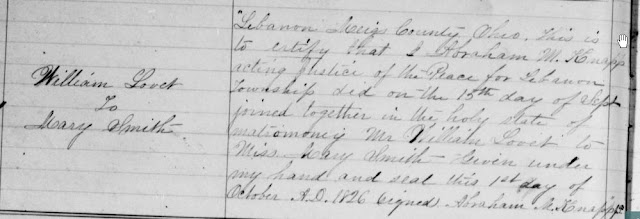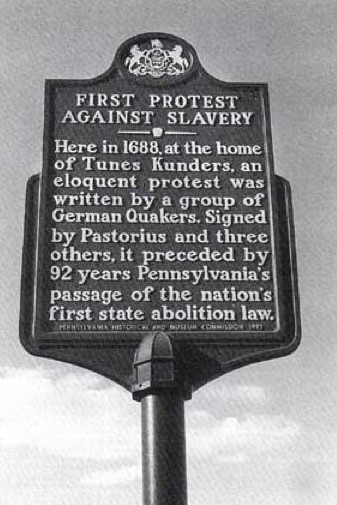The wife of John
Smith was Elizabeth Parsons, born May 4, 1785 in Buckhannon Settlement of
Virginia (now West Virginia). Her
marriage record of August 31, 1804 in Harrison County states that her father is
Charles Parsons. Her mother, Elizabeth
Chestnut Parsons, had died in 1797, when Elizabeth was only 12 years old. She and John Smith had at least nine
children.
Charles Parsons,
her father, was a Revolutionary War veteran.
He was born in 1745 and joined with Captain John Harness’s Virginia
Rangers on October 1, 1775. He served as
a scout. He had established a “settlement
right” of 1400 acres on Elk Creek in Harrison County in 1773 and in 1787,
surveyed a road from Randolph County to the Buckhannon Settlement. He moved his family to Jackson County about
1792, and his wife, Elizabeth Chestnut Parsons died there about 1797. Charles died in 1823 and was buried in the
Baptist Grove Cemetery, which is located right off US Route 33, about five
miles east of Ripley, WV.
Charles’ father
was William Parsons. There is much
confusion about two William Parsons, who are thought to be father and son, but
both worked as surveyors, and both had important accomplishments in their
careers. The son died before the father,
which adds to the confusion. There are
many surveys signed by William Parsons, and there are two distinct
signatures. To the best of my knowledge
at this point, here is what I know about them.
William Parsons,
Jr. was born 1722- 1724, probably in Pennsylvania and married Martha Hughes in
Pennsylvania on December 5, 1744. He was
probably trained as a surveyor by his father.
He is thought to be the William Parsons that surveyed the “Transpeninsular
Line,” which established the east-west boundary between Pennsylvania and
Maryland.
William Parsons,
Sr. is thought to have been born in England (although some sources say Prussia)
on May 6, 1701. He came to America
around 1725. He was trained as a
shoemaker, but was a voracious reader and taught himself mathematics to a
remarkable level, which led to his second career as a surveyor. He caught the attention of Benjamin Franklin,
and was asked to join the JUNTO, a “club of mutual improvement,” which was the
precursor to the American Philosophical Society. He served as the first librarian of the JUNTO’s
subscription library, the first in the colonies.
William Sr. was
appointed Surveyor General in 1741, and in 1749 was appointed a Justice of the
Peace in 1749 in Lancaster County, PA.
In 1752, he was commissioned to lay out the town of Easton, PA and
became known as the “Godfather of Easton,” having laid out its streets and town
square, building a jail and school, digging a well and laying out a
cemetery. It is difficult for us to
understand what a hard, physical job being a surveyor was. It involved hiking through wilderness, living
in the wilds, and it took its toll on William, forcing him to give up his
lucrative career after less than ten years.
In 1755, after hearing of the Indian massacre at nearby Gnaden Hutten,
most of the citizens of Easton fled.
William wrote to Governor Morris asking him to provide arms, ammunition,
and soldiers to defend the town. He
could not afford to send any of the young men with the message, needing them
for defense, so he sent his daughter, Grace.
One account says she went on horseback, making the trip in two
days. Another account says William sent
her in a wagon which would return with the needed supplies, and that she would
stay in Philadelphia for her safety.
As successful as
William Sr. was in his career, he was not successful in marriage. He married a German woman, Johanna Christiana
Zeidig in 1722. She became very active
in the Moravian Church, of which William was opposed. He told her she had to leave the church, or
he would leave her. She would not, and
in 1745, he left her, taking their two youngest children with him. He is supposed to have sent for Johanna when
he knew he was dying in 1757, and she left to go to his side, but he died
before she arrived. Benjamin Franklin
was in London when he heard of William’s death.
In a letter to Hugh Roberts, Franklin described William as “an odd
character,” “a wise man that often acted foolishly,” as someone who “even when
prosperous, was always fretting” and “had always the means of happiness without
ever enjoying the thing.”
William died
December 22, 1757 at the age of 57. He
is buried in the German Reformed Cemetery in Easton. The inscription on his marker reads “He
rocked Easton in her cradle and watch of her infant footsteps with paternal
solicitude.”





































